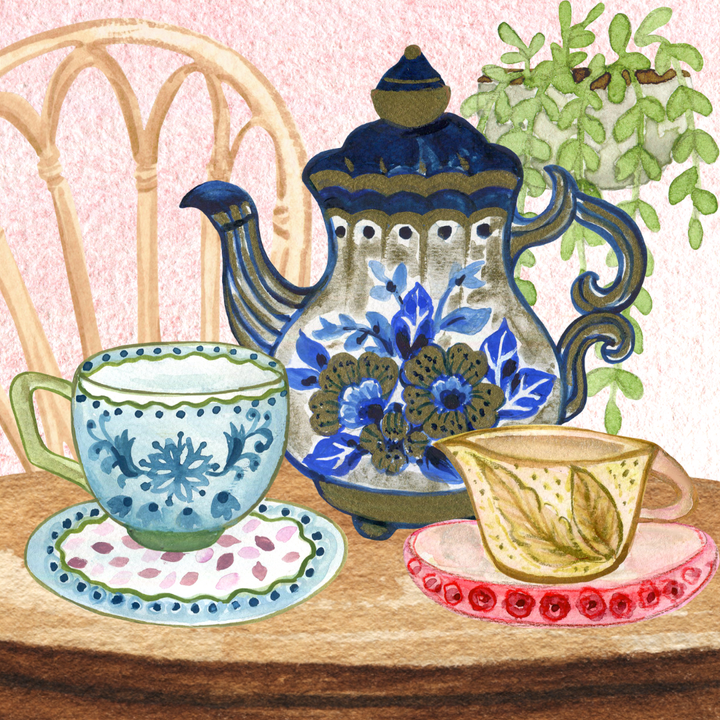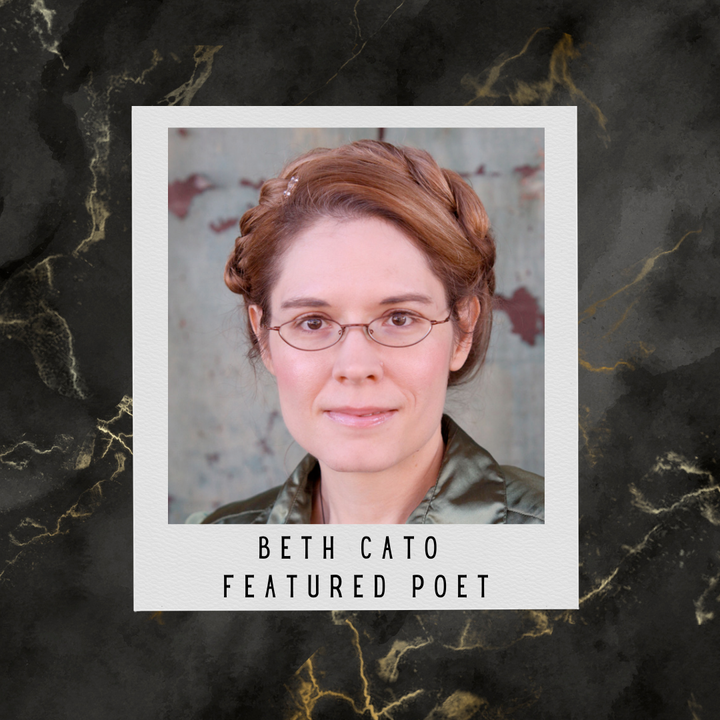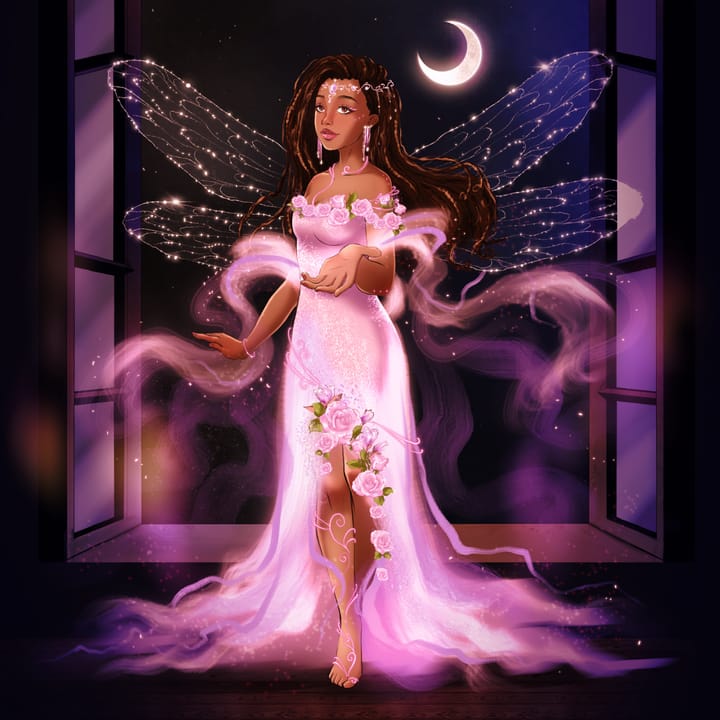Story Process: A Mind Map for "Xtabay"
I'm going to talk about my own process in writing one specific story, “Xtabay” which appeared in Shadow Atlas: Dark Landscapes of the Americas...
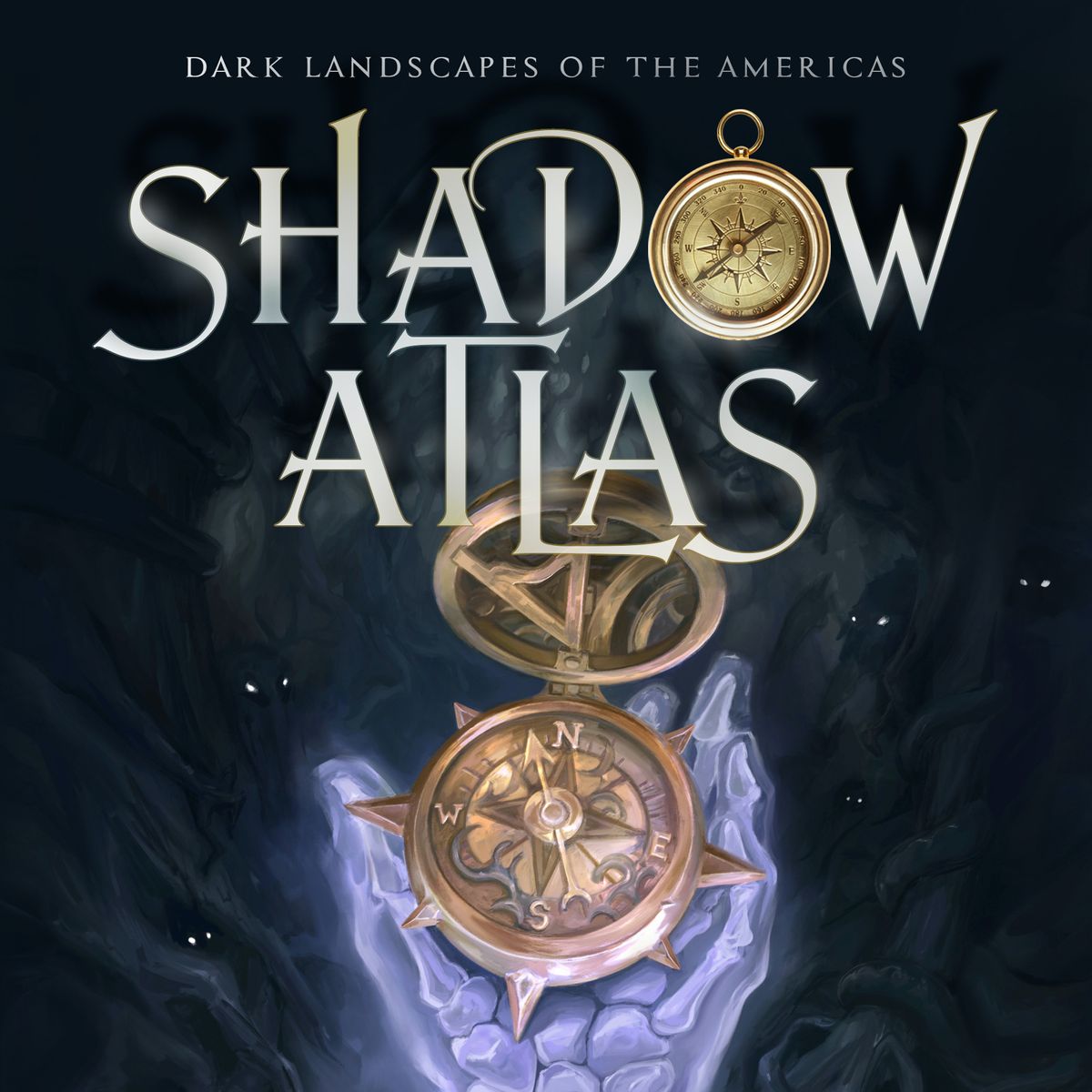
You can listen to this, or read the transcript below, which also has pictures. This was for paid subscribers only until the 15th of April, at which point it was unlocked for everyone.
Hello, and welcome to the OMG Julia Podcast, the podcast where we talk about creative lives and processes. I am your host, Julia Rios, and today this is a special for my paid subscribers. I'm going to talk about my own process in writing one specific story, and that story is “Xtabay” which appeared in Shadow Atlas: Dark Landscapes of the Americas, which came out from Hex Publishers in the autumn of 2021.
Listen to "Story Process: A Mind Map for "Xtabay"" on Spreaker.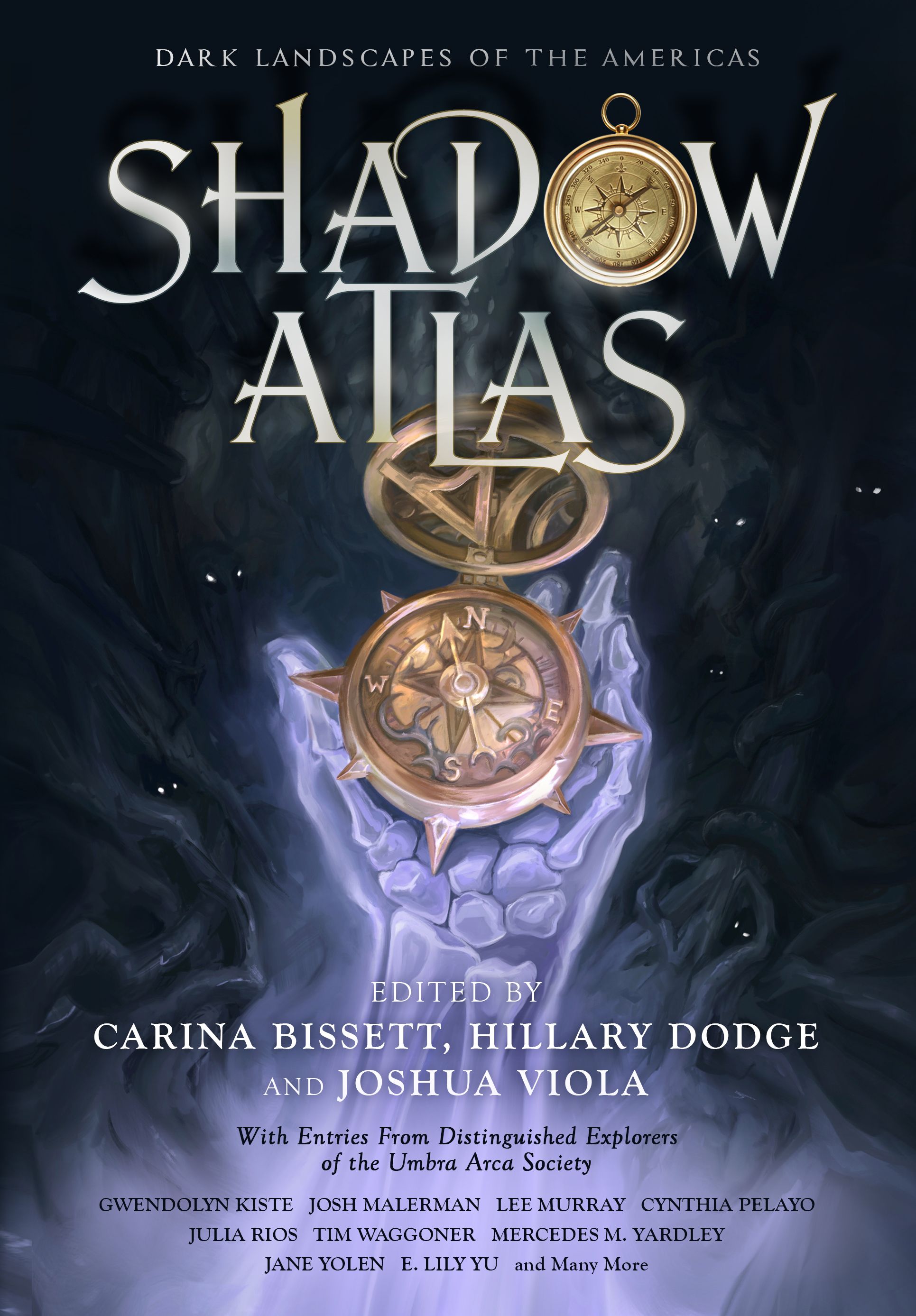
This story was specifically commissioned as a story about Yucatán, which is where my father was from. The editors of the anthology had a concept for the book that was going to be an atlas of supernatural things and legends and folklore in different parts of North, Central, and South America. So when they asked me if I wanted to contribute, I said of course I would love to, and I thought that obviously Yucatán would be the best place for me to set my story.
They thought this was a great idea, and then immediately I fell into a research hole.
I thought, Okay, how am I going to do this? There's so much that I can do!
I had spent literally days and days scouring the internet, books, YouTube, any kind of thing that I could find. Paranormal investigation websites, the travels of people who research bats… lots of things!
And so then I thought, Okay, I need to narrow it down.
So I sat down with a mind map, which actually in this case was just a blank piece of paper. And I'm going to give you a picture of it in the show notes for this podcast. So if you are listening to this, click through to the show notes, and you'll see the full picture of this paper, which I kept out for a long time and also spilled lots of things on. Don't worry. It's not actually blood even though it looks like it has a reddish stain I'm pretty sure that's just tomato sauce, probably. Not blood.
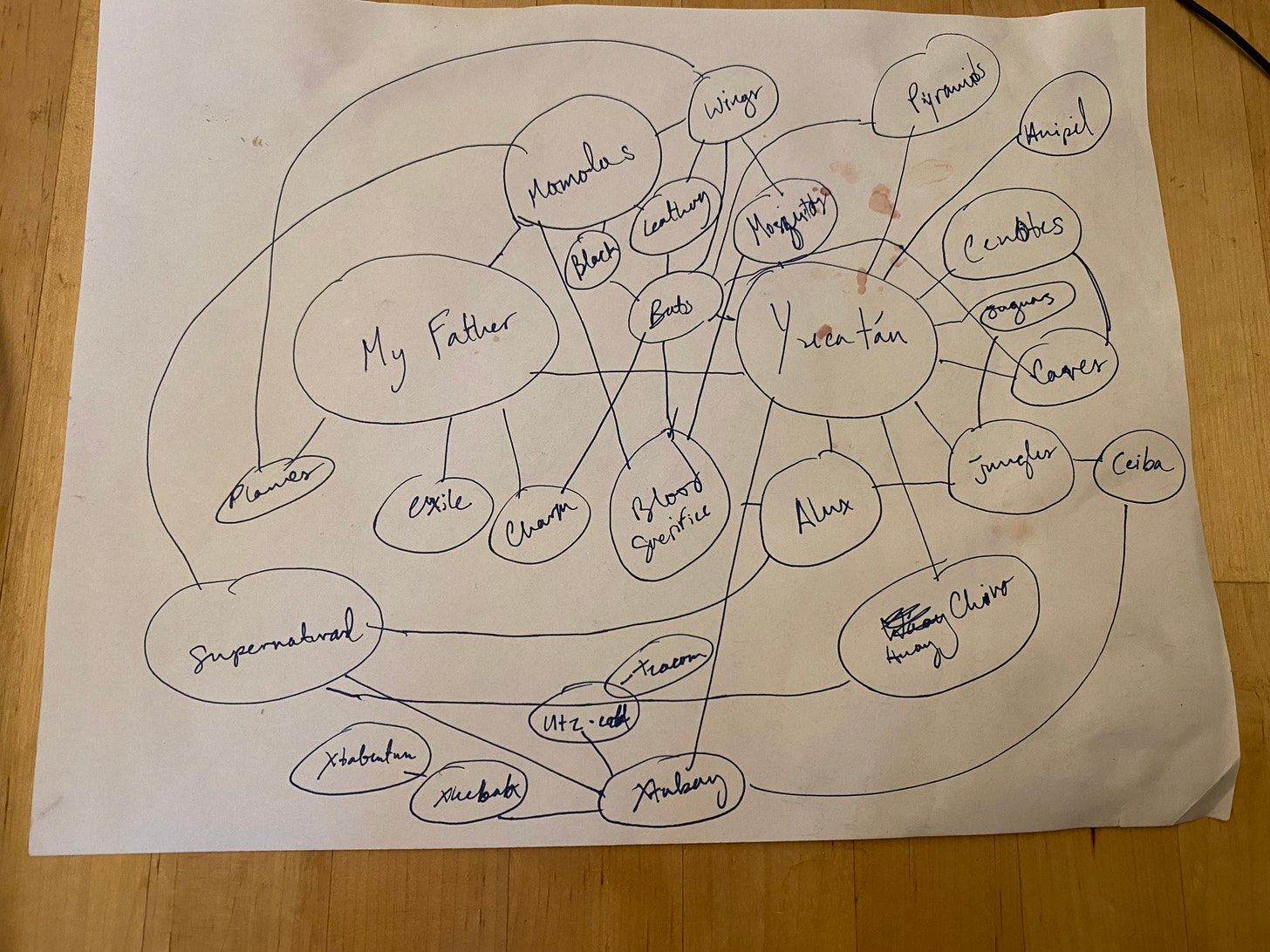
This mind map: if you're not familiar with this concept, it's like you take a couple of things and then you try to come up with a web of connections to try to make them connect with each other. So, in this case I started with my father and Yucatán because my father was from Yucatán. So, I thought about things that connected to either of those.
For my father, I thought of planes, I thought of exile, I thought of charm, and I thought of mamolas. Planes, because my father was a pilot and he liked to fly small planes. Exile, because he left Yucatán when he was 15 and he never lived there again. He did come back to visit, and he took me there to visit, but he didn't actually ever live there again. Charm, because he was very charming. And mamolas, which, as far as I can tell, are a thing that my father made up.
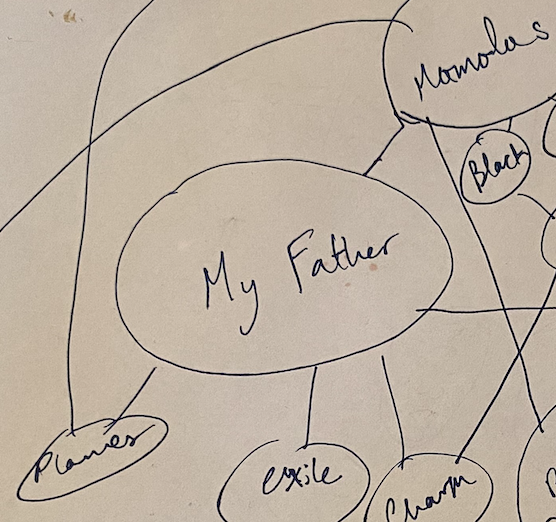
He would tell us the story of the mamolas and the day the mamolas came to town, and their black leathery wings would cover the sky, and they would be looking for your uncovered necks so that they could come and like attack them and probably suck your blood, but actually what happened was his hands would descend from the sky and attack your neck by tickling.
I've looked for it over and over again. I've done multiple iterations of the spelling. I've tried different phrases. I can't come up with anything. I did text one of my brothers and I asked him if he remembered it and he said yes, but all he remembered was the tickling, too. So we think that that's something probably our father made up, and I thought about trying to make a fake story about it, but I didn't really want to because I didn't know what he had originally thought of, where he had gotten it from, and I kind of just didn't want to mess with that. So I let that one be.
But then I was like, Okay, mamolas: what are they like?
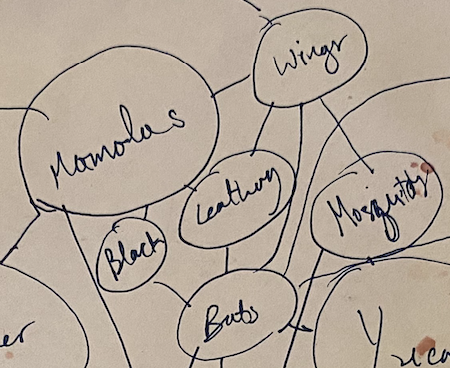
They're black. They have leathery wings, black leathery wings. What else has that? Bats. Mosquitoes have wings and they're not leathery, but mosquitoes and bats and mamolas could all be tied to blood sacrifice, and so could an alux, which is a little protective spirit that maybe protects your land if you're a farmer or something like that. They can kind of be running around in the wild, but they can also be directed to protect specific places. And people argue over whether they're real or not, but there is a bridge that they had so much trouble building near the airport in Cancún that they eventually had to build an alux house to appease the alux. And after that there weren't any more accidents.
And I thought that was a rich mine. I might go with that, but I was deep into Yucatán at this point so I was like, Okay, what else is in Yucatán?
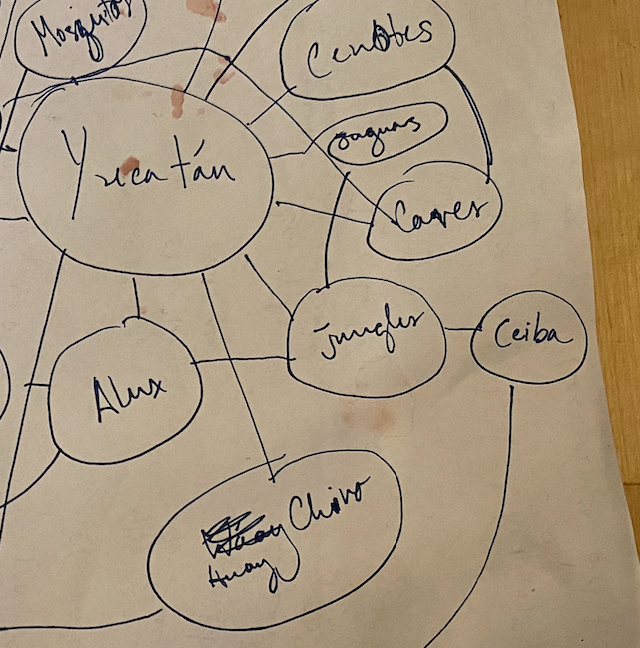
Cenotes, which are caves that you can swim in. Sometimes they're thought of as the door to the underworld. Jaguars, big cats in the jungles. There are jungles. There are caves—caves are where the cenotes are. Jungles also have the ceiba tree, which was a sacred tree to the Maya. There's the wáay chivo (sometimes spelled huay chivo), which is a kind of terrible goat demon who will wreak havoc and eat a lot of livestock and possibly you.
Then of course the legend of Xtabay. Xtabay is a beautiful woman's spirit that you will see in the folds of a ceiba tree and then she'll lure men to their doom. Like she'll call them in, they'll have good sex, and then she'll eat them! Or she'll just do all kinds of things to cause trouble. You'll find occasional reports, like there's some guy who disappeared for like three to seven days and he says he doesn't remember anything about where he was, but he remembers seeing a beautiful woman by a ceiba tree, and then that's it. And then somehow he manages to come out of the jungle alive, so that's lucky for him.
I thought, Okay, these are all good starts. So where are we going to go with any of these?
We've got the alux. That may be a good idea. Got wáay chivo. I already knew there was going to be a poem by someone else with that idea so I was like maybe not that one. And then there is Xtabay.
Xtabay is a really interesting story. So coming out of the Xtabay capsule, there's Xkeban. And Utz-Colel, which are the names of the two sisters that are central to this story. And xtabentún and tzacam, which are the two different flowering plants that are central to this story.
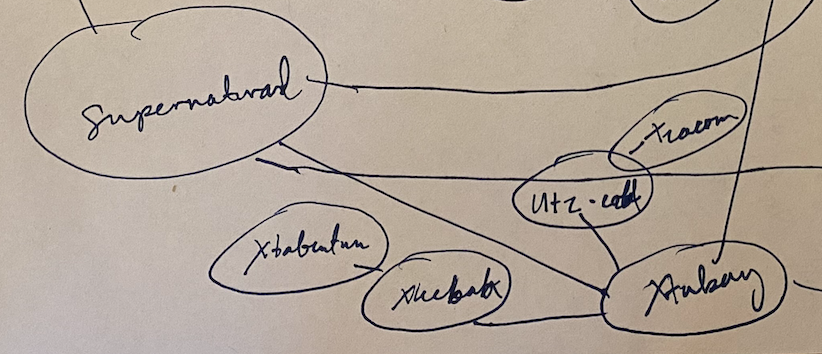
So I started thinking a lot about each of these and basically from there, I went into thinking a lot about different things like the conversations that we have with folktales and what they mean, and I also thought about my father immigrating to the US, and some of the struggles that he faced with assimilation and the things that he kind of passed down to his children as an immigrant who wanted to assimilate fully.
And so then I thought, okay maybe I'll make this story really embrace that struggle of assimilation identity.
The struggle both at home where it's like are you in line with the colonial forces or the or the native forces? And then also abroad, are you trying to assimilate to your new place or are you trying to remember your old heritage? And the ways that there are lots of complicated webs of people and relationships.
And so I kind of I used a few details from my father's own life like he did actually go to Southern Mississippi University, which I have the character in this story go to, and he did have multiple children with white women in the United States, and he did encourage us to assimilate. So I thought about how this all ties in.
And then the interesting thing with Xtabay, in particular with this story, is that the quick rundown of the Xtabay story is that there are these two women a long time ago in a small village in Yucatán. They are sisters, and they're both beautiful. But one of them is kind of promiscuous, and the other one is very virginal and pure.
And so everyone in the village thinks that the one is very pure and upstanding, but the other one is actually kindhearted and helps people. The pure and upstanding one is actually very cruel and bigoted. So then one day the impure one dies and they find her with like all these animals guarding her and she's got beautiful flowering vines of a specific kind of morning glory called the xtabentún flower kind of growing all over her and climbing all over the village and giving this beautiful scent. Then not long after that, Utz-Colel, the proper one dies and they find her because she smells real bad and she's only got a cactus on her that’s giving these terrible flowers that smell bad.
They're like, but she's so good and pure! They bring fresh flowers and those flowers wither immediately and just die. But the story goes that Utz-Colel is so jealous of her sister, even in death, that she prays to evil spirits to be a beautiful woman and then just sort of takes over her sister's role and becomes a beautiful woman who lures men to their death. And she uses her name, Xtabay, because in the in life, Xkeban is not actually a name. It meant prostitute. So they were calling her a derogatory sex worker name instead of her name, which was Xtabay. But in the afterlife Xtabay is this terrible spirit who’s very beautiful but then will kill you.
And I feel like this story is really interesting and has a lot of weird conflict about it. So I kind of twisted it a little bit when I used it and I made it that Xtabay was the actual spirit It wasn't Utz-Colel. It was actually Xkeban, and that she would be looking for a nice man. She was not actually setting out originally to be to be mean. But then when people don't do what she thinks they should, then she gets upset because she's been mistreated for her entire life and now she's also been mistreated for her entire death.
And she's sort of like the voice of the old native ways versus the new colonial ways. She's sort of like, “You're not even embracing your heritage.” The more you deny who you are, the worse things will be for you is the curse that she imposes upon the character in the story. I really wanted to explore all of these really conflicting things and one of the ways that I did that was by taking this mythology and kind of twisting it a little bit so we didn’t have this narrative that Utz-Colel is the bad person, because it would make sense for Utz-Colel to be the bad person, but then why is she using Xtabay as her name? Why is the spirit that we see looking like Xtabay and not Utz-Colel?
Yeah, so these were all things that I was thinking about. Then, once I worked out that I was going to do this story about this particular myth, I also wanted to try to to weave in modern stuff. And both modern stuff from now, and modern stuff from the early twentieth century, so that we could see kind of different time periods and how they might look.
And then I also wanted to make sure that I — If you're going to play with something and kind of like turn it a little bit sideways, it's good to know every version that you can. So I spent just ages scouring every instance I could find of someone telling this myth.
I listened to firsthand accounts from people translated from Maya to Spanish, that I would listen to the Spanish version.
I would be listening to people reading children's books, because there are children's books. There's a children's book called The Legend of Xtabay and it's so funny because in that one they don't say anything about prostitute and they don't say that she's like basically having sex with everybody. Instead they're like she had a lot of boyfriends, which I thought was funny.
Xtabentún, the flower, is now used to make a liqueur so there's also the origin story from that liqueur, which I read, and all kinds of other things.
And at that point, after I was soaking in it for so long, then I felt like, okay now I'm going to make my own version and make it a little bit different. And the reason I want to make it different is so that I can ask what makes this beautiful person who was so nice to people in life turn “evil” in death? And is she evil? Who's evil in this? Who is the villain?
If you say that you're good because you're following a certain set of rules that someone has prescribed, are you good? Or do your motivations matter a lot, and is being true to yourself more important than being someone who follows specific rules and standards? These are a lot of the questions that I was grappling with.
So you can see basically all of the things that I spent ages thinking about. And I really did spend a long time, like I followed research trips of The Batman, who studies bats, and his trips with his grad students into the jungle to to study bats at temples and things like that. I mean, I watched full documentaries, I read articles, I bought academic journals so I could read more accounts of their trips. I really spent a long time digging into the bats, like maybe I was going to write about them, and then I totally threw all of that research right out, and there basically aren't any bats in my story.
But that process was part of my process of researching the area and digging myself deep into it. I think I couldn't have written this story if I hadn't spent all that time researching bat stuff because I wouldn't know for sure that I wanted to go in a different direction for this one. Same with the alux, and with all the other things. You have to deeply sink into them to know what you're actually going to do.
I say “you” as if this is a prescription, but it's not. It's just what I had to do in this specific instance. Part of me doing that was also trying to sink deeply into the area, and remember the landscape, and remember the people, and have a sense of how it feels to be there. And part of what I was remembering was my own memories of the time that I was there.
I have the modern character there as a teenager who is in kind of modern times and I was there as a teenager in more modern times as well. So her experiences are somewhat drawn from my own experiences of hanging out with a big group of kids and going to the street fair, and swimming during the day, and things like that. My group of kids that I hung out with did not have evening storytelling time where we talked about aluxes and Xtabay, sadly, because that would have been awesome and I would have been super into it. But I'm pretty sure if we had done that, they would have all thought that I was a nerd for asking.
So that's basically the story of how this story came to be. If you think it sounds interesting, you can read it in Shadow Atlas: Dark Landscapes of the Americas. I hope that it is interesting to you. I hope this artifact is interesting even if it's not a step by step how to write a story. It's just this is one way to kind of jog loose some ideas. I didn't know, when I started writing it, if I was going to write about my father being charming and maybe also secretly a mamola or a bat, or my father having flown planes. I didn't know if that would enter into it, but those didn't. They didn't enter into it at all. Just basically him having been a teenager who left Yucatán and coming to the US was the only thing that I really took from his life specifically.
All of the rest of it is just sort of there as backdrop. Even if it doesn't make it onto the page, it's there in my head, and I know that this whole world that I've set this story in is rich and full of these other things as well.
If you have questions or comments, or you want to talk about some of the themes that we discussed in the story, I'd love to hear from you, and I'd love to hear all about it.
Thank you so much for supporting me and my work! I will talk to you next time.
